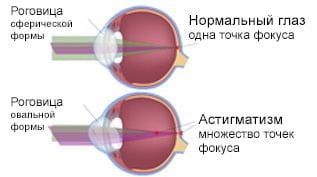If you’re reading this, you’ve probably already been familiar with contact lenses or glasses (or both) for years and know all too well the hassle and limitations that come with them. Here’s what’s really going on.
As light rays move from one medium to another, from air to water, for example, they refract. This is called “refraction.” When rays pass through corneal and lens tissue, they undergo refraction in a way that allows them to focus on the retina. The phenomenon of the eye not being able to focus light onto the retina, usually because the eye is not quite rightly shaped, is called refractive impairment.
The following briefly describes the most common refractive disorders and eye diseases, which owe their occurrence mainly to aging and thickening or clouding of the lens, which may occur in advanced years.
Eye diseases:
Myopia

Myopia (blurred vision in the distance), otherwise known as myopia, is the most common refractive disorder. It usually occurs when the eyeball is too long or the cornea is too curved. The excessive length of the eye causes light rays from distant objects to be focused at a point that is closer in axis and does not reach the retina; the light rays are scattered and an unfocused image reaches the brain.
Farsightedness

Farsightedness (that is, the inability to see objects clearly at close range) is the common term for hypermetropia, and is caused by the eyeball being too short or the cornea being too flat. Due to the insufficient length of the eye, the cornea and lens do not have enough space for the light rays to cross at the focal point on the retina, so the image is focused behind the retina, and poor quality signals are sent to the brain over and over again.
Astigmatism

Astigmatism is a vision defect associated with the distortion of the shape of the lens, cornea or eye, as a result of which the person loses the ability to see clearly at any distance: both near and far. If astigmatism is left untreated, it can lead to strabismus and a sharp decline in vision. Without correction, astigmatism can cause headaches and eye pain.
Presbyopia
Presbyopia is age-related farsightedness caused by a person’s natural aging. It is an abnormality of refraction of the eye in which a person cannot see small print or small objects at close distances. Presbyopia usually begins to affect people between the ages of 40 and 50. It’s most likely cause is the loss of elasticity of the lens.
Cataract
Contrary to popular belief, a cataract is not a film that forms on the surface of the eye, but a change in the transparency of the lens inside the eye that prevents light rays from passing through it. This gradual clouding makes vision less sharp over time. Rays of light that manage to penetrate to the retina are scattered, and vision becomes blurred.